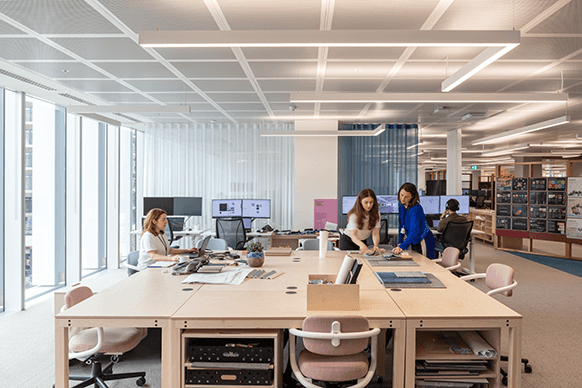The built environment contributes 40 percent of the UK’s total carbon footprint, according to the UK Green Building Council (UKGBC). Designing in net-zero carbon into a building’s operations has a crucial role to play in cutting this figure across the property industry by slashing energy usage while helping future-proof assets against a backdrop of increasing regulation.
Perkins&Will, which recently merged its London practice with Penoyre & Prasad, will produce a Zero Operational Carbon Strategies Report for each new build or retrofit project at RIBA Stage 2 (at the end of the concept design) at no additional cost to the client.
The aim is to encourage more sustainable buildings to be developed by making the process easier for investors and developers. By producing a Zero Operational Carbon Strategies Report, it will be made clear to clients what the operational emissions gap of their buildings will be and how best to close it, helping to better inform their decisions in line with the 2050 net-zero target.
In order to hit the net-zero operational carbon target, based on the UKGBC’s 2019 definition, Perkins&Will, in partnership with Penoyre & Prasad, will also address water usage and incorporate sustainable materials to create blueprints for climate-resilient buildings. The longer-term aspiration will be to report on these as the data becomes easier to harvest.
To reduce energy use, the massing and orientation of buildings will first be considered to ensure energy demand where possible. In all situations, pointing a building south, towards the sun, allows far greater control over heating and cooling – the two things that create the bulk of operational carbon emissions.
Good insulation with appropriate levels of ventilation alongside airtightness enables buildings to better regulate their temperature and further reduces the amount of heating and cooling they require. Furthermore, the practices’ design strategies will maximise the amount of appropriate renewable energy systems alongside other equipment such as heat pumps.
Another key focus area will be the health impacts of materials used both for the structure and internal fit out, with the aim of choosing long-lasting and non-toxic materials to improve the building’s climate resilience and improve the wellbeing of users.
Clients will have the option to choose between the traditional option or the costed net-zero operational carbon offer.
